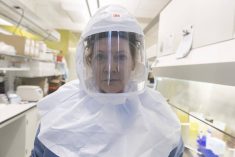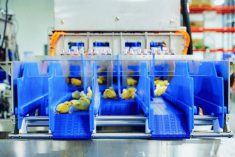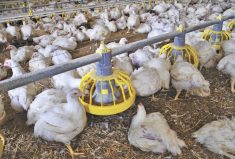With poultry meat and eggs being the most efficient and widely consumed animal proteins, advancing research to increase poultry productivity is crucial. Since productivity of meat and eggs in chickens is widely dependent on food intake, it’s important to investigate how feeding mechanisms are regulated within chicks.
Food intake in chickens is governed by a variety of molecular signals that control appetite, growth and metabolic processes. Takaoki Saneyasu of Kobe University conducted a comprehensive review of recent research on the physiological mechanisms governing food intake in poultry. His review provides valuable insights into the role of peptides — such as spexins, adipokines and intracellular signaling mechanisms — influencing food intake in chicks.
Saneyasu says factors such as hormones, nutrients and neurological signaling control food intake in living beings. Various factors were reviewed, including neuropeptides, such as adipokines, neurosecretory proteins GL and GM, and cellular signaling, to determine how each of these factors impacts the food consumption in chicks.
Read Also

From fleece to fertile ground
Lindsey Weber turns Canadian wool into sustainable, biodegradable weed suppression and horticulture alternatives to plastic, boosting farm sustainability and revitalizing Canada’s wool industry.
Neuropeptides are protein-like molecules that are involved in neuronal communication. These function as signaling molecules and are important in regulating various physiological activities. One category of neuropeptides studied for its role in regulating feeding mechanisms is spexin (SPX). There are two types of SPX: SPX1, found in humans, and SPX2, found in chickens. SPX is related to galanin, a neurotransmitter that impacts food intake via hypothalamic pathways and appetite regulation. SPX 1 and 2 act on the galanin receptor (GALR) and reduce food intake in chicks. They activate GALR2-like receptor (GALR2L) and GALR3.
Additionally, they change the gene expression of neuropeptides that control hunger, such as agouti-related peptide (AgRP) and cocaine- and amphetamine-regulated transcript (CART). This suggests that SPXs control eating behaviour via GAR2L and GALA3 in chicks.
Another important group of molecules that regulate food intake is adipokines. These are bioactive polypeptides secreted by adipose tissue and are crucial for regulating appetite, metabolism and inflammation. Leptin and adiponectin are two major adipokines in mammals, but their roles in appetite regulation are different between mammals and chickens. Contrary to mammals, leptin has a minimal role in chickens. Plasma adiponectin levels are decreased by refeeding in mammals, whereas they are higher in refed chicks compared to fasted ones. Adiponectin enhances food intake in chicks, but the effects of adiponectin on food intake are conflicting in mammals.
Saneyasu says other under-researched adipokines, like chemerin and apelin, have been shown to reduce food intake in chicks. “Understanding the variations in the regulation of feeding via adipokines can lead to species-specific strategies for optimizing poultry diets.”
Saneyasu says neurosecretory proteins, including neurosecretory proteins GL and neurosecretory proteins GM, could play a role in food intake mechanisms. He also emphasizes the mechanism of cellular signaling. “In mammals, cellular signaling pathways in the hypothalamus like AMPK, JAK/STAT and Akt greatly contribute to the regulation of food intake, suggesting the possibility of their role in food intake in chickens as well.”
Saneyasu says future research should focus on the peripheral adipokines and gut hormone production in neonatal chicks, as more species-specific research could lead to new strategies for enhancing poultry production.














